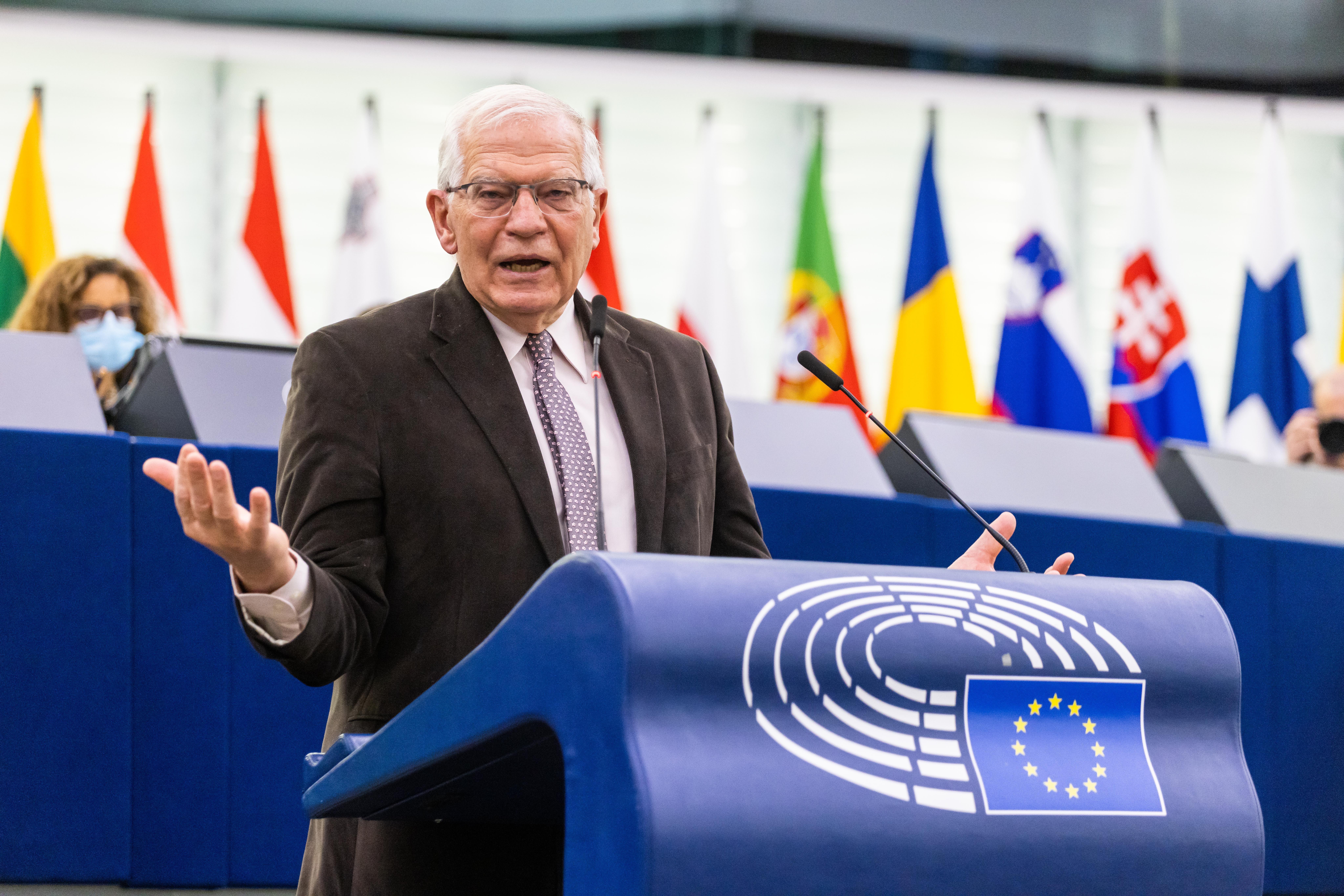Europe
More bang for our buck by spending together

Josep Borrell, EU High Representative for Foreign Affairs and Security Policy
© picture alliance/dpa | Philipp von DitfurthAs Russia’s war in Ukraine rages on, there is more and more attention for the EU’s own capabilities to deal with military conflicts. With rising defence budgets, and equipment sent to Ukraine, countries across the Union are gearing up for large-scale investments in their defences. To coordinate these at the EU level, the European Commission and the EU High Representative presented on Wednesday 18 May an analysis of the EU’s defence spending. This exercise offered not only an assessment of the EU’s defence investment gaps, but also suggested that the EU can take a coordinating role in the procurement of new equipment.
Since the start of the war, EU governments have announced around €200 billion in extra spending in their armed forces. While this may seem like a significant increase, much of it will have to be spent on replenishing weapons stockpiles and replacing outdated equipment. And whereas China and Russia over the past two decades have increased their defence budgets by 292% and 592% respectively, Europe has been lagging behind with a combined increase of 20% over the same period. Still, the funding increases are a welcome break from the past that will help 11 more EU countries to reach NATO’s 2% norm.
Now that budgets are going up, so does the risk of fragmentation, duplication and rising prices. As member states start spending, it is important for the EU’s collective defence that this is done in a coordinated way. The EU leaders also recognised when they met in Versailles on 11 March to discuss the EU’s collective response to Russia’s invasion of Ukraine. At this summit, they agreed to “resolutely invest more and better in defence capabilities and innovative technologies” and to “strengthen and develop our defence industry”. They also tasked the Commission, together with the European Defence Agency, to provide the analysis of the defence investment gaps.
The analysis of the defence investment gaps was published mid-May and provided three main areas that have to be addressed:
(1.) Uncoordinated defence expenditure;
(2.) Defence industrial gaps due to nationalised markets; and
(3.) Defence capability gaps due to low stockpiles, Soviet-era legacy systems and weaker air and missile defence systems.
To address the gaps, the Commission offers three aims for future investment: Together, Better, and European. Whereas the aims for Better and European investments are not surprising, the real progress is in the Together part. In the document, the Commission and the High Representative announce that they will establish a Defence Joint Procurement Task Force, which will work with member states to coordinate their very short-term procurement needs.
The idea for joint defence procurement follows the same logic as the European Commission’s programme to coordinate the procurement of COVID-19 vaccines and recent plans to buy gas together. "By buying together, EU countries can get a better deal," summarised European Commission Vice-President Margarethe Vestager.
At the moment, joint EU procurement is still in its infancy. In 2020, EU member states spent only 11% of their investments collaboratively, while member states previously agreed to aim for at least 35%. And with around 60% of our equipment bought outside the EU, there is also an incentive to make the European defence market more competitive.
The Commission’s proposal to play a coordinating role is therefore a welcome initiative to strengthen Europe’s defence capabilities. By buying equipment together, EU member states will be able to get better prices, increased interoperability and stronger EU defence markets. In short: more and better bang for our buck. The analysis of the defence investment gaps was a good starting point of this plan and we should hope that the Commission swiftly moves it forward.
